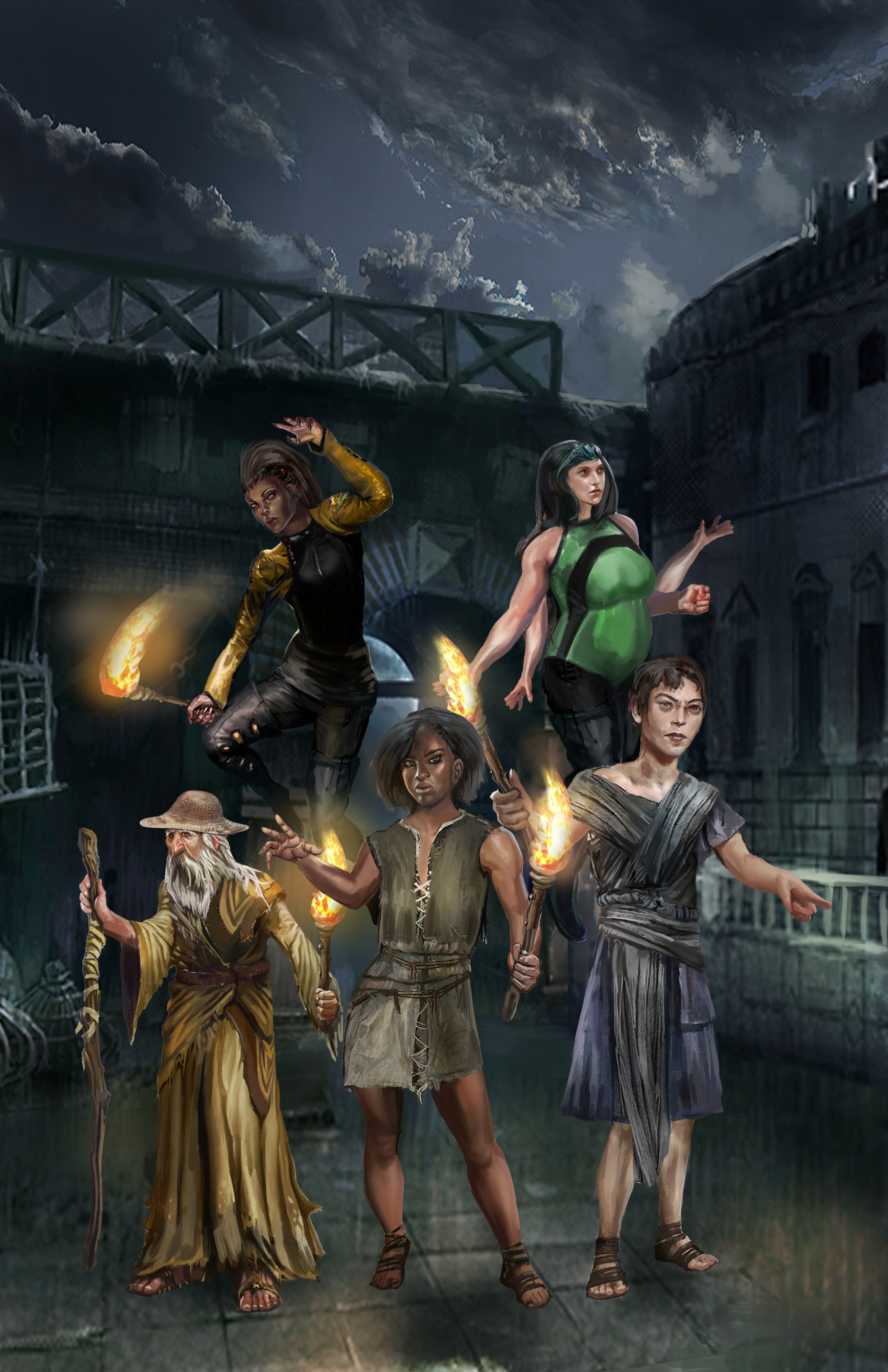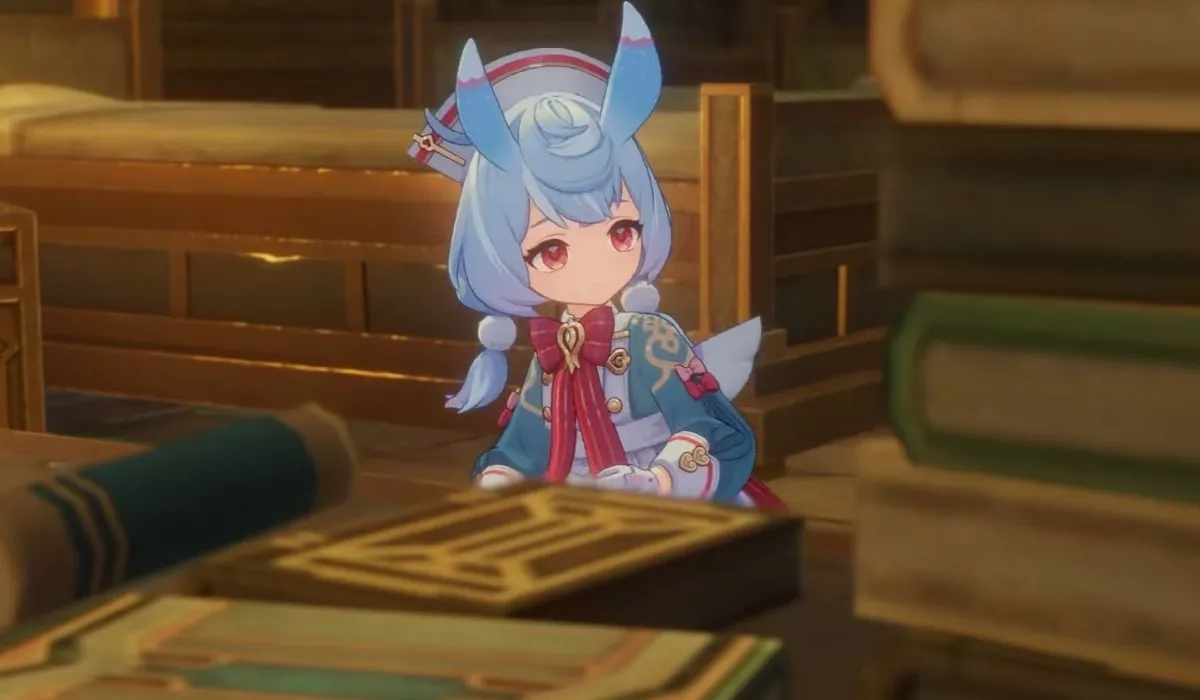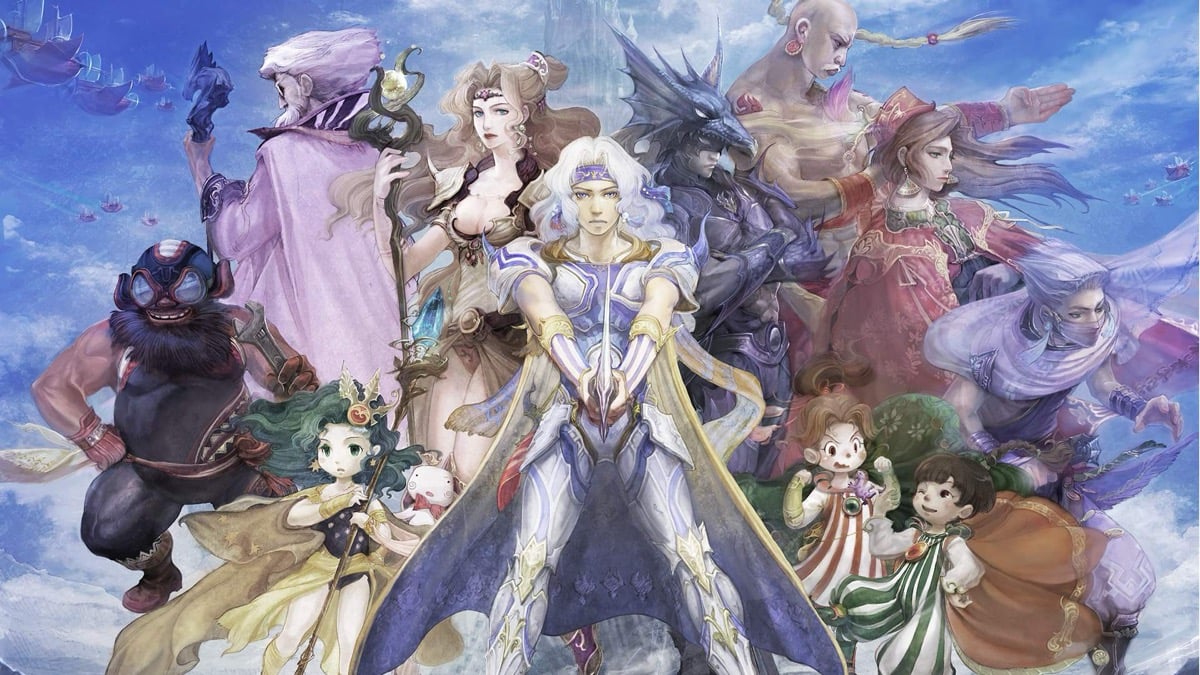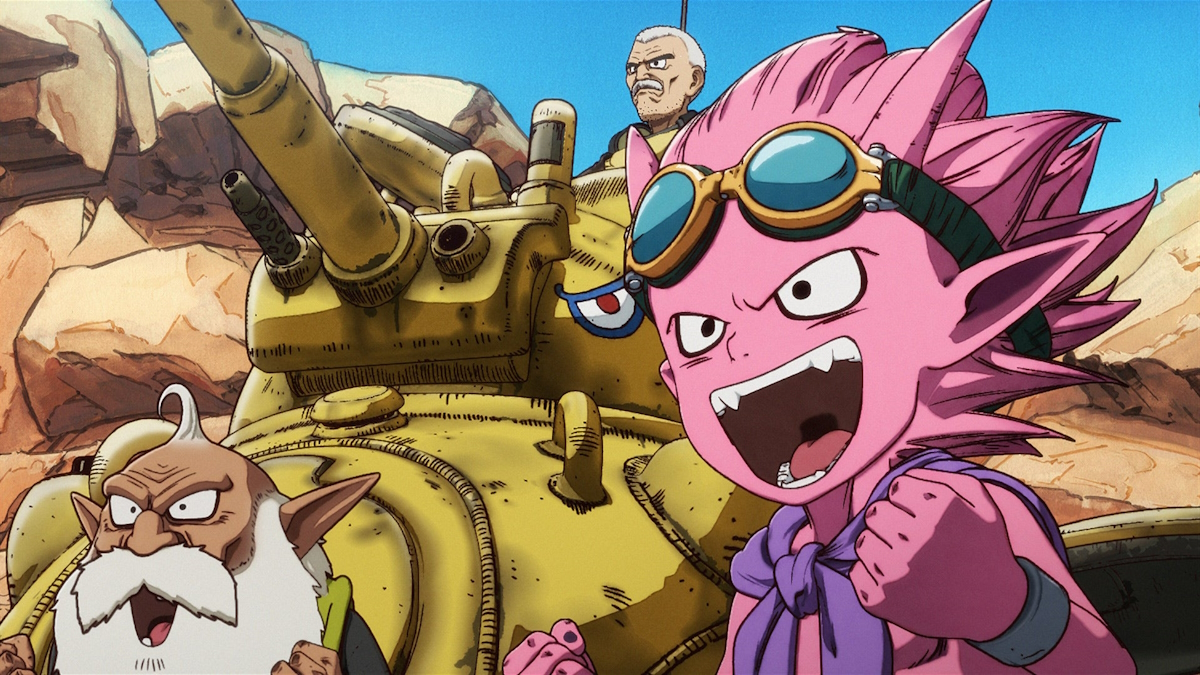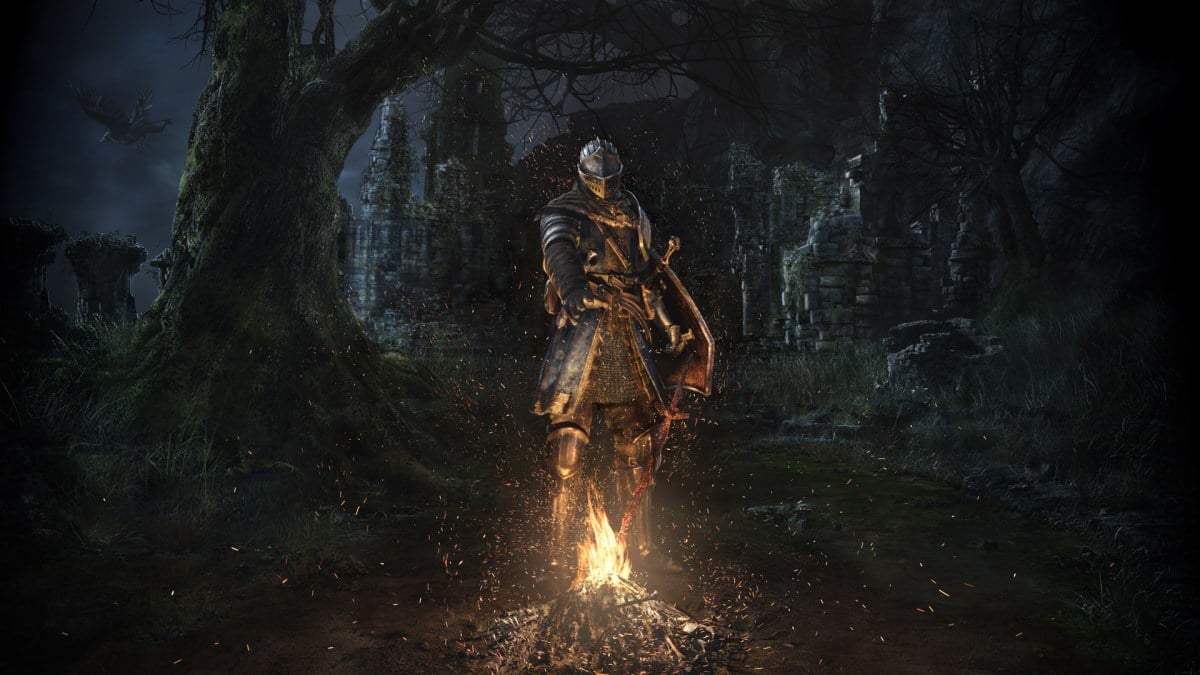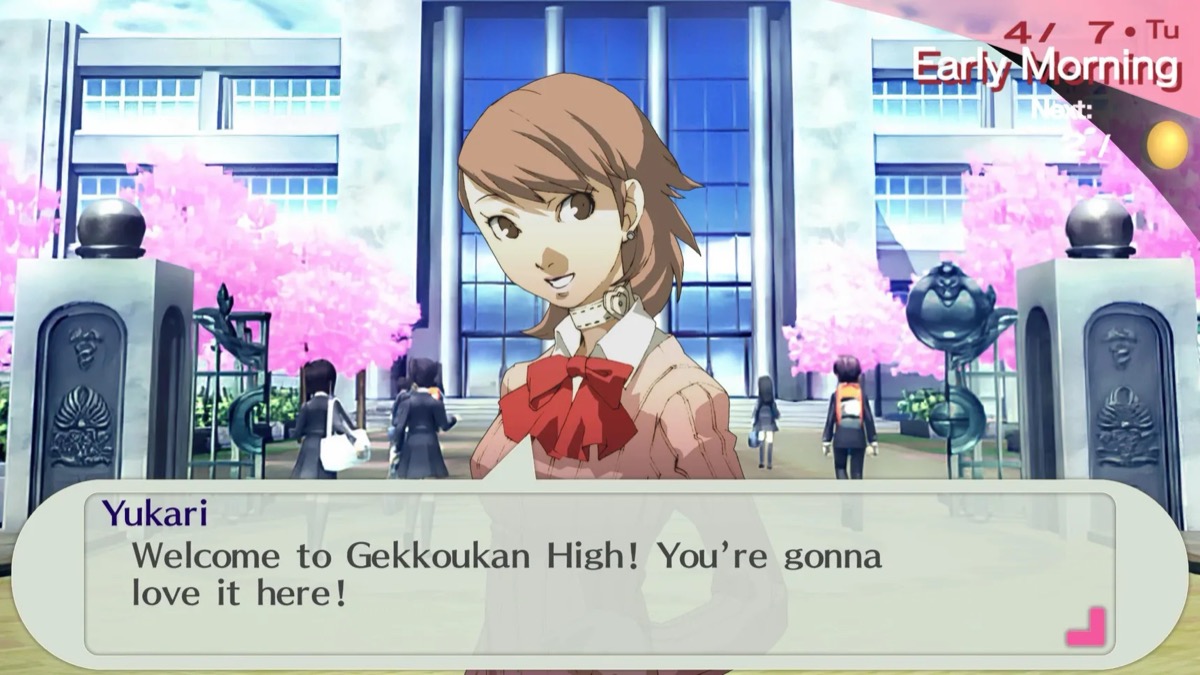In addition to being a TMS contributor, Bijhan Valibieigi is also the creator of the Time Wars roleplaying game and the author of the Time Wars series. Over email, we talked to Bijhan about representation in media, the inspirations behind Time Wars, and the work that goes into a project of this magnitude.
The Mary Sue: What inspired you to start Time Wars?
Valibeigi: My mother read to me the entirety of the Chronicles of Narnia when I was a child, which was my first exposure to a fictional world which sprawled across multiple works. On my own, as a child, I explored the worlds of Star Trek, Power Rangers, Batman, Spider-Man, the X-Men, and the Teenage Mutant Ninja Turtles as much as I could. Things changed when I met a kid at school who unspooled the history of the Star Wars universe to me, as I was no longer isolated in my fascination. When he told me about Exar Kun and the Cult of Ragnos, it felt like the movies I had watched were part of a larger, even more beautiful tapestry. With the sharing of our people’s oral tradition, I ascended to membership in the Club of Nerd. Together, with that group of friends, we created new characters and plot lines for the Transformers: Beast Wars series. A turning point came after I learned how to play Magic: The Gathering. At the time, my beloved sibling, Anna, and I had bonded deeply over our shared love of the Digimon series. I wanted to deepen that bond, so, drawing upon my experiences with Magic: the Gathering, I created a game for us to play with the vinyl Digimon figures we collected. The game allowed us to interact with our favorite universe in a way we never had before. It was also my first attempt to create a game which not only told a story, but provided an interesting challenge as well.
The sum of my experiences left me with a conclusion: The shared mythology of a fictional universe had brought me closer to the people around me. Sharing stories and deepening each others’ understanding of a context shaped my ability to communicate. I was lucky, because the stories I had been consuming were positive stories. All of the universes I had become surrounded by had messages which were intensely positive. Star Trek is as optimistic about the future of our species as anything could be. Star Wars made the argument that no one is beyond redemption, and that self-sacrifice is a more powerful force than violence. Power Rangers showed me heroes came in every shape, color, and gender expression.
Then I realized the scope and scale of media which does not have these positive messages, and which asks nothing of its audience, while contributing nothing. Mindless violence and meaningless sex, dehumanization for entertainment, and motivations which are shallow and dispassionate dominate a landscape of media which deals in emotional shock rather than emotional development. People like D.C. Fontana, Jack Kirby, and Akiyoshi Hongo had reached out to me, across time and space, using media, and told me stories which gave me confidence to be who I really am. They had changed my life and shaped the person I became. They laid down a path and allowed me to follow. When I saw so few people today were laying down the same kinds of paths, I knew that I had to be the change I wanted to see.
As I began writing, building, and crafting Time Wars, I tried to find wisdom in the success stories of those who had attempted similar things. I studied the lives of George Lucas, Gene Roddenberry, and Stan Lee. But one thing kept coming up over and over: these were straight white men. They lived lives that I could not. They had access to opportunities beyond me. There were no queer transfeminine autistic Iranian-American secular Muslims in science fiction for me to look up to, as characters or as creators. Essentially, there was no precedent for success. That made my task more daunting. My solace is in my determination to become the first, and eliminate this obstacle for my peoples; my many tribes.
The source of inspiration which is most surprising would probably be the influence of feminist, anti-capitalist, and anti-racist punk rock and punk-influence hip-hop, like the X-Ray Spex, the Adverts, Deltron 2020, the Network, Devo, the Gorillaz, Sir Mix-a-Lot, the Polysics, and many others. A lot of these artists actively blend science fiction into their imagery, so it makes sense that my science fiction imagery would be blended with their philosophies. Many science fiction subgenres have the word “punk” appended to them for a reason. I think Time Wars is definitively timepunk, and punk is as important to that aesthetic as time.
TMS: What has the process of developing it been like for you?
Valibeigi: In 2010 I was the Game Master for a gaming group which was deeply eclectic. Although we always played storytelling/role-playing games in the style of Dungeons & Dragons, we could never nail ourselves down to any one system of rules, roving from TMNT and Other Strangeness to Star Trek FASA, among others. No matter how many things we liked about them, we also always found more than enough which we did not like. My players presented me with a challenge: create a new game system which would appeal to everything they liked about previous systems, but which also overcame the common hurdles. The prompts which were given to me were: Animals, Aliens, Vampires, Super Heroes, and Time Travel. I retreated to my computer, poring over the various notes I had taken throughout our games together, and emerged with hand-bound computer paper books entitled The Splicer’s Guide. Each contained the very first version of Time Wars: Strike Team.
Once we began actually playing, it became clear that the game was much more than a pass time. The stories being told, and the Human history being explored, resonated with us in a deep way. I had accidentally created a very intense emotional experience, which tested the moral character of the people involved. As I improved and refined the rules, the stories we told became more frightening and exciting, hopeful and exuberant, and action-packed to the point that we were whooping and hollering. Taking on the role of a super-powered time traveling vampire hunter was more than just using incredible powers to fight evil, it also meant understanding why the past had unfolded as it had, and trying to push history in a different direction.
It took me a while before I decided to make the game available publicly. I always wanted Time Wars: Strike Team to be totally free, so anyone can download the PDF and get playing right away. But then I realized that people were having a hard time understanding what the Time Wars Universe was like. They couldn’t understand it the way they already understood the Star Wars and Star Trek universes. While Time Wars: Strike Team was as interactive as a game could be, who the characters, their goals, and their context was difficult to explain. That’s when I realized that, like all my favorite media, Time Wars needed to be more than a single product.
Writing the stories of Time Wars Tales came very naturally. It was nearly effortless to populate this universe with characters who both fascinated and excited my imagination. Drawing upon my favorite stories and characters, the stories flowed forth, combining macabre horror, witty humor, and pulse-pounding suspense, in equal measure. The Time Wars Tales are engrossing and thrilling unto themselves, and provide a great deal of context to players of Time Wars: Strike Team. But what I didn’t expect was how personal they were. It was rarely conscious, but while writing I would discover personal experiences of mine embedded inside the fantastical adventures of my larger-than-life characters. Realizing that you are a transfeminine person, for example, is a harrowing journey, regardless of whether it occurs in the modern rat race, or during a Vampire hunt in ancient Rome.
Creating games and stories comes very easily to me. Ever since I was a child, as many can attest to, my imagination was an unstoppable source of new ideas – often to the chagrin of anyone who was trying to get me to do anything. The process of producing mountains of Time Wars material was never a hardship. Instead, I’ve found the most difficult thing was alerting the general public as to the existence of Time Wars. I often compare myself to Steve Wozniak, and pine for someone to be my Steve Jobs, so to speak. I am an artist, a tinkerer in the laboratory of the mind. Those talents and skills, however, have nothing to do with being an effective salesperson. While I’ve gotten increasingly competent at marketing my products, I’ve also had an increasingly clear picture of my personal limitations. Social anxiety is less than conducive to “schmoozing”, as it’s called.
I’d say that my largest hurdles in this process have been a lack of startup funds. My parents have been incredibly supportive, helping me to commission new artwork recently. But my day job pays so little that I was on food stamps even when I was working full time, leaving me no money to invest into my own future. Despite having two college degrees and a wealth of experience in many fields of work, I cannot find a job which pays a living wage, which severely limits my ability to pursue my passion. The lack of support for the working poor in this nation is by far the single largest reason why it is so difficult for new talent to emerge. Without the constant support of my partner RaeRae and my parents, I would never have been able to make it this far.
Also, chocolate. Chocolate helps a lot.
TMS: For someone who’s not familiar with the game, can you explain how Time Wars: Supreme Command works?
Valibeigi: The second game to take place in the Time Wars Universe, Time Wars: Supreme Command allows players to take on the role of a Supreme Commander in the Time Wars. You assemble a Strike Team of Time Travelers, arm them with powerful Items, and give them commands from the 161st Century. There are cards which, when played, are added to the Timeline – the battlefield of the Time Wars. These cards form a chain, showing the way in which history will unfold. Players will maneuver Civilians and Events through the Timeline, using their Time Travelers and Items to alter the course of history. You must create a version of history which will score the Goal cards you play for yourself, or else foil the Goal cards your opponents have played. If you have three scored Goal cards, you win the game; if you have three foiled Goal cards, you lose the game. Any player can trigger the Timeline to resolve, which will cause most Goals to either become scored or foiled – but once they do, each other player will be given another turn, giving them an opportunity to turn the tide. Trying to guess how far away your opponent is from being able to complete their plan creates a tension, as you try to bluff your opponent and buy time.
Unique to Time Wars: Supreme Command is the fact that it is a deck-stacking game – the first game ever of its kind! There are no discard piles. Instead, when a card is spent, you send it to the bottom of a player’s deck. That way you’re not only stacking your own deck in your own favor, but also attempting to undermine the efforts of your opponent.
You can either play the game two-player right out of the box as-is, or else you can prepare custom decks for even more intense battles of wits. If each player sleeves their cards in a unique color, as is recommended, you can watch your cards travel through your opponent’s deck and into their hand. This is a unique experience for card gamers, offering a new level of strategic thinking.
Artistically, the purpose is to create a high-strategy game which is simple to learn, intensely customizable, and which has neither currency nor intrinsic violence. So many games focus on violent conflict and accumulation of resources. Time Wars: Supreme Command replaces economics with timing, and violence with influence. Cards like “Major Invention”, “Harriet Tubman”, and “Nikola Tesla” are meant to convey a sense of value; a sense that these are things of more value than wars or soldiers.
TMS: What’s the appeal for you of working on a flash fiction series?
Valibeigi: While writing the books for Time Wars Tales, I realized that there were some ideas which wouldn’t fit neatly into the format of a book. In many ways, the ideas were too large. In others, too small. It was actually a convention-goer at Norwescon who proposed I begin a flash fiction series for Time Wars. It took a few more months for me to congeal the concept in my head, but it was an excellent fit for the universe.
Time Wars Tales: Legends of the Order is a sweeping odyssey with an ensemble of characters, told in a series of explosive scenes. Time Wars is perhaps best characterized by its juxtaposition of epic scope and intimate moments, and the flash fiction format is excellent for this type of storytelling. Each story is, itself, vibrant with emotional experiences and sensory details. Whether we’re in a sweltering Arizona jail cell with the wrongfully imprisoned Chinese cowboy Fa Bo, running through the moonlit forests of Virginia with Harriet Tubman, or swinging a sword forged of alien metal with the trans Muslim superhero Purple Fox, the stories are dynamic and vital. When woven together, however, the stories give each other depth, providing context for one another. Although each entry has a very concise story within it, the entirety of Legends of the Order is building up to a single, massive conflict. Each story brings the reader one step closer to discovering what kind of adventure is brewing.
I think that I’m largely influenced by the nonlinear and modular storytelling of the Star Wars Expanded Universe. There were several series of books, such as Young Jedi Knights, Rogue Squadron, and Galaxy of Fear which were able to be a rewarding and enriching experience unto themselves. Each also took place in a distinct era of Star Wars, sometimes decades between them, despite being published at the same time. Reading them together, however, created an increasingly clear picture of how the Star Wars galaxy worked, and the events which shaped the characters throughout the movie series. Drawing from my experiences exploring the Star Wars galaxy through this kind of woven fiction, it is very rewarding to recreate for my own characters and settings. That’s one of the main reasons I chose to name my series Time Wars – as an homage!
TMS: With this year’s Hugo Awards, we saw a lot of push back against progressive politics in science fiction. What are your thoughts on the importance of representation and/or politics in sci-fi?
Valibeigi: It was very hard for me to admit to myself that I was trans and queer. All my heroes were cisgendered men. Luke Skywalker, Jim Kirk, Tommy Oliver, and the Ninja Turtles were all intensely masculine, and all supported by less-central female characters. I now realize that, subconsciously, I was resisting what I had been told was a “downgrade”. Who would give up a starring role in order to play the supporting cast?
That’s the venom of the white cisgendered man as the “default”. The pervasive idea of feminine inferiority was so ubiquitous that I rejected my own identity in order to preserve my ill-gotten privilege.
Despite all the wonderful things my media had said to me, all the positivity, and even all the powerful women it depicted, the stories I enjoyed were by and large written and produced by white straight cisgendered men. People write what they know. Women, transfolk, queerfolk, people with both visible and invisible disabilities, and people who are not white have been systematically excluded from the highest levels of success in all media. This means that they can’t write their own stories, or that when they do these stories are less likely to be read.
Gene Roddenberry made the choice to involve as many people who were unlike him as possible when he made Star Trek, but he had the option to not. Jack Kirby only created the Black Panther when he realized that he had already made a vast pantheon of superheroes who looked only like him and his family, but not one who looked like the dear friends he had spent his childhood with. And the contributions of George Lucas’s then-wife Marcia Lucas to the Star Wars galaxy is still largely overlooked to this day.
Those who oppose diversity in the voices of science fiction make the argument that it is unfair to service one specific portion of people over another. They make the claim that science fiction honors today ought not be disproportionately awarded to someone of a particular group simply because they belong to that group. I will reject this premise until accolades are being distributed 50% to women, 30% to black people, 25% to Muslims, and 25% to queerfolk. That’s roughly the distribution of people in the world population, and all scientific research shows that these groups of people enjoy and produce science fiction at similar rates. The “PC Demands” are that people be recognized based on merit rather than their race or gender, which would mean fewer white cisgendered men would win awards. The agenda of those who bemoan “PC Demands” is based on the premise that white straight men are writing superior science fiction than their peers, and that is a premise which I reject.
Mathematically, 15% of the world’s population is black women. The raw facts are that science fiction has been beloved across the world, and both Star Trek and Star Wars was well received in homes across the United States, Africa, and South Asia. People are creative and inspired by science fiction regardless of gender or race. So why aren’t 15% of the world’s most famous science fiction authors black women? Because of concerted efforts on the part of those who have the resources to spend, excluding anyone who does not belong to their club, hoarding success.
You can check out all stuff Time Wars for free right here.
(all images via Time Wars and Bijhan Valibeigi)
—Please make note of The Mary Sue’s general comment policy.—
Do you follow The Mary Sue on Twitter, Facebook, Tumblr, Pinterest, & Google +?




